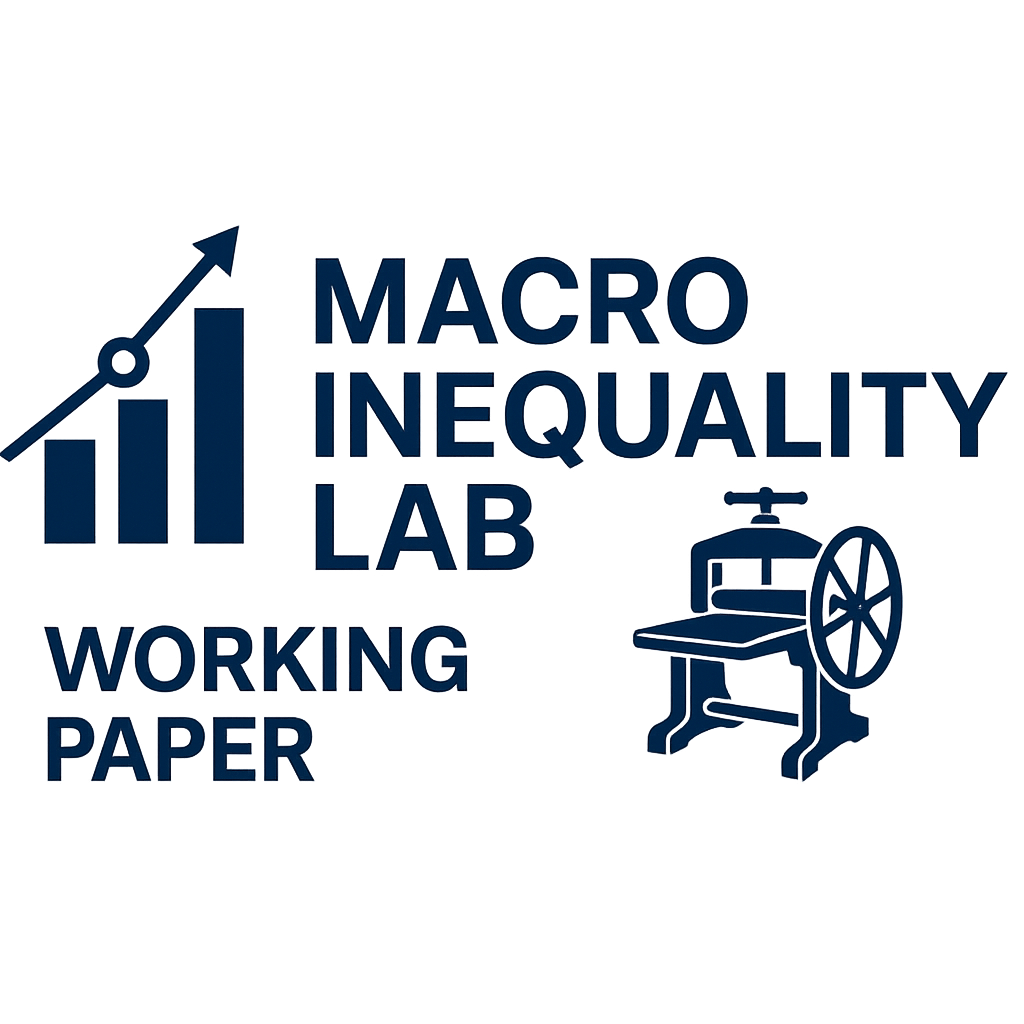
News

Lab Director Moritz Kuhn Joins MeToD Evaluation Committee
Lab director Moritz Kuhn joined the evaluation committee of the newly established Measurement Laboratory (MeToD). The MeToD lab focuses on developing innovative tools to measure economic behavior guided by economic theory and on creating new econometric methods for analysis. The Macro Inequality Lab looks forward to close collaboration with the MeToD lab on this exciting research agenda in the future.

Lab Director Moritz Kuhn Appointed Chair of IAB Scientific Advisory Council
Lab director Moritz Kuhn has been elected as the new Chair of the Scientific Advisory Council of the Institute for Employment Research (IAB). Moritz has been a member of the council since 2019 and served as Deputy Chair since 2022. The Scientific Advisory Council supports the IAB’s leadership in the strategic development of the institute and provides independent academic expertise to Germany’s leading research center on labor market research.

How does Germany perceive the Welfare State?
New study by Jens Stegmaier, Jonas Aljoscha Weik, and Macro Inequality Lab director Moritz Kuhn. Using novel survey data from the Institute for Employment Research (IAB), the study reveals that 71 % of Germans support the welfare state, yet 64 % believe it is too expensive for society to bear. The survey further finds that a slim majority agree with the statement that social benefits make people lazy—this sentiment is especially strong among low-income earners, 64 % of whom affirmed the claim. These findings underscore a complex dynamic in Germany: broad approval of social protection paired with significant concern about costs and fairness of benefit design. (Study only available in German)
Link to IAB study
Link to ZDF coverage
Link to Süddeutsche Zeitung coverage

Wealth inequality, market access, and a
new plan for American workers
New policy essay by Pavel Brendler and Macro Inequality Lab director Moritz Kuhn highlights how high-income households not only save more overall but also build greater wealth per dollar earned, mainly through stronger access to home ownership and employer retirement plans. Lower-income households, by contrast, face major structural barriers. The proposed Retirement Savings for Americans Act (RSAA) aims to close this gap by providing retirement plan access for low- and moderate-income workers — a reform that could significantly reduce wealth inequality in the United States.
Link to policy essay

Income and Wealth Inequality in the United States: An Update Including the 2022 Wave
with José-Víctor Ríos-Rull
This paper provides an updated and comprehensive analysis of earnings, income, and wealth inequality in the United States using data from the 2022 Survey of Consumer Finances (SCF). It documents the current distribution and long-term trends across demographic groups such as age, education, and marital status. The study expands previous analyses by exploring new aspects of inequality, including labor market segmentation, cohort wealth accumulation, family structure, and household saving motives. These findings offer key insights for economic modeling and policy design aimed at understanding and addressing the multifaceted nature of inequality in the U.S.
Link to working paper
Link to VoxEu column

Interview with Moritz Kuhn

The Geography of Job Creation and Job Destruction
with Iourii Manovskii and Xincheng Qiu
Spatial differences in labor market performance are large and highly persistent. Using data from the United States, Germany, and the United Kingdom, we document striking similarities across these countries in the spatial differences in unemployment, vacancies, and vacancy filling, job finding, and separation rates. The novel facts on the geography of vacancies and vacancy filling are instrumental in guiding and disciplining the development of a theory of local labor market performance. We find that a spatial version of a Diamond-Mortensen-Pissarides model with endogenous separations and on-the-job search quantitatively accounts for all the documented empirical regularities. The model also quantitatively rationalizes why differences in job-separation rates have primary importance in inducing differences in unemployment across space while changes in the job-finding rate are the main driver in unemployment fluctuations over the business cycle.
Link to working paper

Job Levels and Wages
with Christian Bayer
Job levels summarize the complexity, autonomy, and responsibility involved in executing
tasks. They are conceptually distinct from occupations and education. Our finding that job
levels can be constructed from task execution data demonstrates their economic content. We present a novel theory of employer job design in which jobs with different levels emerge endogenously. Using matched employer-employee data, we demonstrate the theory-consistent mediating role of job levels in life-cycle wage growth, gender wage gaps, and returns to education and seniority. Our theory interprets some wage differences as arising from differences in human capital utilization and offers a new perspective on observed wage differences.
Link to working paper

Distributional Dynamics
with Christian Bayer and Luis Calderon
We develop a new method for deriving high-frequency synthetic distributions of consumption, income, and wealth. Modern theories of macroeconomic dynamics identify the joint distribution of consumption, income, and wealth as a key determinant of aggregate
dynamics. Our novel method allows us to study their distributional dynamics over time. The method can incorporate different microdata sources, regardless of their frequency and coverage of variables, to generate high-frequency synthetic distributional data. We extend
existing methods by allowing for more flexible data inputs. The core of the method is to treat the distributional data as a time series of functions whose underlying factor structure follows a state-space model, which we estimate using Bayesian techniques. We show that the novel method provides the high-frequency distributional data needed to understand better the dynamics of consumption and its distribution over the business cycle.
Link to working paper

The Distribution of Household Debt
in the United States, 1950-2022
with Alina Bartscher, Moritz Schularick, and Ulrike Steins
Using new household-level data, we study the secular increase in U.S. household debt and its distribution since 1950. Most of the debt were mortgages, which initially grew because more households borrowed. Yet after 1980, debt mostly grew because households borrowed more. We uncover home equity extraction, concentrated in the white middle class, as the largest cause, strongly affecting intergenerational inequality and life-cycle debt profiles. Remarkably, the additional debt did not lower households’ net worth because of rising house prices. We conclude that asset-price-based borrowing became an integral part of households’ consumption-saving decisions, yet at the cost of higher financial fragility.
Review of Economic Dynamics, Volume 57, July 2025

Unemployment insurance reforms and labor market dynamics
with Benjamin Hartung and Philip Jung
Using new household-level data, we study the secular increase in U.S. household debt and its distribution since 1950. Most of the debt were mortgages, which initially grew because more households borrowed. Yet after 1980, debt mostly grew because households borrowed more. We uncover home equity extraction, concentrated in the white middle class, as the largest cause, strongly affecting intergenerational inequality and life-cycle debt profiles. Remarkably, the additional debt did not lower households’ net worth because of rising house prices. We conclude that asset-price-based borrowing became an integral part of households’ consumption-saving decisions, yet at the cost of higher financial fragility.w
Review of Economic Studies, March 2025, advance online publication
